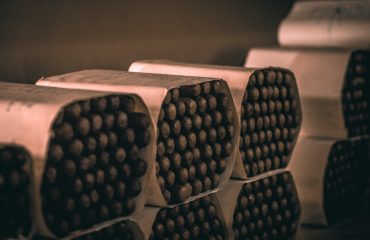The world runs on steel. From skyscrapers piercing the clouds to the intricate components of our vehicles, steel’s strength and versatility are undeniable. But behind every robust structure and efficient machine lies a commitment to rigorous quality standards. This commitment ensures safety, reliability, and performance, making steel a truly indispensable material. This post delves into the critical aspects of maintaining these standards throughout the steel production process.
1. Raw Material Selection: The Foundation of Quality
The journey to high-quality steel begins long before the smelting process. The selection of raw materials – primarily iron ore, scrap steel, and various alloying elements – is paramount. The chemical composition of the iron ore, its purity, and the presence of impurities like sulfur and phosphorus directly impact the final product’s properties. Careful analysis and rigorous testing are crucial at this stage. Suppliers must adhere to strict specifications, and incoming materials are subjected to comprehensive checks, including chemical analysis, particle size distribution analysis, and moisture content determination. Any deviation from the established norms can lead to defects and inconsistencies in the final steel product, potentially compromising its strength, ductility, and other critical properties.
2. The Smelting Process: Refining the Raw Material
The smelting process, often involving blast furnaces or electric arc furnaces, transforms the raw materials into molten pig iron. Maintaining consistent temperature, oxygen levels, and chemical composition during this stage is vital. Advanced process control systems monitor and regulate these parameters, ensuring the pig iron meets the required specifications. Continuous monitoring and adjustments are crucial to prevent defects like slag inclusions and gas porosity, which can severely weaken the final steel. The quality of the pig iron directly influences the subsequent steelmaking steps, underscoring the importance of meticulous control throughout the smelting process.
3. Steelmaking: Achieving the Desired Alloy Composition
Once the pig iron is produced, it undergoes further refining in steelmaking processes like the basic oxygen furnace (BOF) or electric arc furnace (EAF). These processes remove impurities and introduce alloying elements to achieve the desired chemical composition and mechanical properties. Precise control over the addition of alloying elements like manganese, chromium, nickel, and molybdenum is crucial. These elements significantly influence the steel’s strength, hardness, corrosion resistance, and other characteristics. Sophisticated analytical techniques, such as spectroscopy, are employed to monitor the chemical composition in real-time, allowing for immediate adjustments to maintain the desired properties. Variations from the target composition can lead to significant performance issues in the final product.
4. Casting and Rolling: Shaping the Steel
After steelmaking, the molten steel is cast into various forms, such as slabs, blooms, or billets, depending on the intended application. The casting process must ensure the absence of defects like cracks, inclusions, and segregation. Careful control of the cooling rate and solidification process is essential to prevent these defects. Subsequently, the cast material undergoes rolling, shaping it into the desired dimensions and form. Rolling parameters, such as temperature, roll speed, and reduction, are carefully controlled to achieve the required mechanical properties and surface finish. Any inconsistencies in these processes can lead to dimensional inaccuracies, surface imperfections, and internal defects, potentially compromising the steel’s structural integrity.
5. Quality Control and Testing: Ensuring Conformance to Standards
Throughout the entire steel production process, rigorous quality control measures are implemented. At each stage, samples are taken and subjected to various tests to ensure the material meets the specified standards. These tests include chemical analysis, mechanical testing (tensile strength, yield strength, elongation, hardness), non-destructive testing (ultrasonic testing, radiographic testing), and metallurgical examination. The results of these tests are meticulously documented and analyzed to identify any deviations from the established norms. This data-driven approach ensures continuous improvement and helps identify potential sources of defects, allowing for corrective actions to be taken promptly. Adherence to international standards, such as ISO 9001, is essential to guarantee the quality and reliability of the final steel product.
The production of high-quality steel requires a meticulous approach, combining advanced technologies with rigorous quality control measures. Every step, from raw material selection to final testing, contributes to the overall excellence of the final product. By adhering to these stringent standards, the steel industry ensures the safety, reliability, and performance of countless applications, shaping the world we live in.
SEO-Friendly Tags:
- Steel Production
- Steel Quality Standards
- Steel Manufacturing Processes
- Quality Control in Steel
- ISO 9001 Steel




